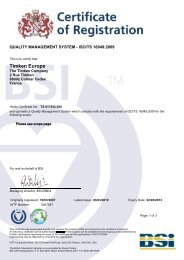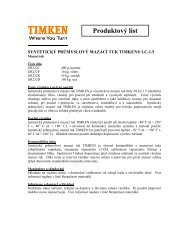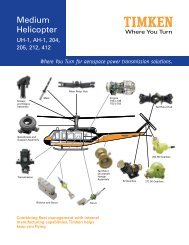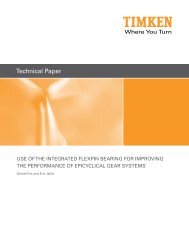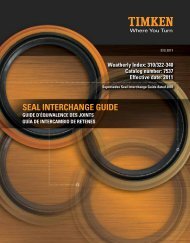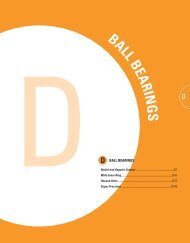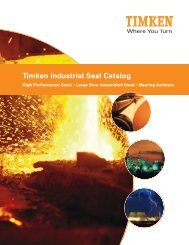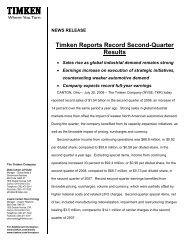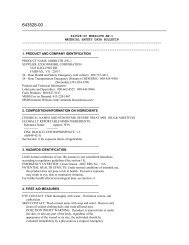Practical Data for Metallurgists - Timken
Practical Data for Metallurgists - Timken
Practical Data for Metallurgists - Timken
You also want an ePaper? Increase the reach of your titles
YUMPU automatically turns print PDFs into web optimized ePapers that Google loves.
FORGING GLOSSARY – continued<br />
SHEAR CRACKING<br />
A diagonal, transgranular crack caused by shear stresses.<br />
SHOT BLASTING<br />
The cleaning of a metal surface through the combination of an air blast<br />
and metal shot used as an abrasive.<br />
SHRINKAGE<br />
The contraction of metal that occurs during cooling after hot <strong>for</strong>ging.<br />
SLIVER (DEFECT)<br />
A loose piece of metal or slender fragment that is <strong>for</strong>ged into the surface<br />
of a component during the <strong>for</strong>ging operation.<br />
SOAKING<br />
Prolonged heating of a metal at a selected temperature in order to ensure<br />
it has achieved a uni<strong>for</strong>m temperature through the entire cross section.<br />
STRAIN<br />
The elastic or plastic de<strong>for</strong>mation of steel caused by stress.<br />
STRAIN HARDENING<br />
An increase in hardness and strength caused by plastic de<strong>for</strong>mation at<br />
temperatures lower than the recystallization range of the material.<br />
STRESS<br />
(1) The de<strong>for</strong>ming load to which a metal is subjected. (2) The resistance<br />
which the metal offers to de<strong>for</strong>mation by a <strong>for</strong>ce.<br />
TRIMMING<br />
A mechanical shearing operation (hot or cold) that removes the flash or<br />
excess material from the <strong>for</strong>ging.<br />
TOLERANCE LIMIT<br />
The permissible deviation from a specified value of any design characteristic.<br />
UPSET FORGING<br />
A <strong>for</strong>ging or <strong>for</strong>ming process that occurs near the end of the bar. The<br />
upset occurs between laterally moving dies which increases the diameter<br />
of the worked piece by compressing its length.<br />
WARM FORGING<br />
The <strong>for</strong>ging or <strong>for</strong>ming process where metal de<strong>for</strong>mation occurs below<br />
the recrystallization temperature. For steels, this temperature can range<br />
from 800 to 1800 degrees Fahrenheit.<br />
WORK HARDENING<br />
An increased resistance to de<strong>for</strong>mation (i.e. increase in hardness)<br />
produced by cold working.<br />
151



